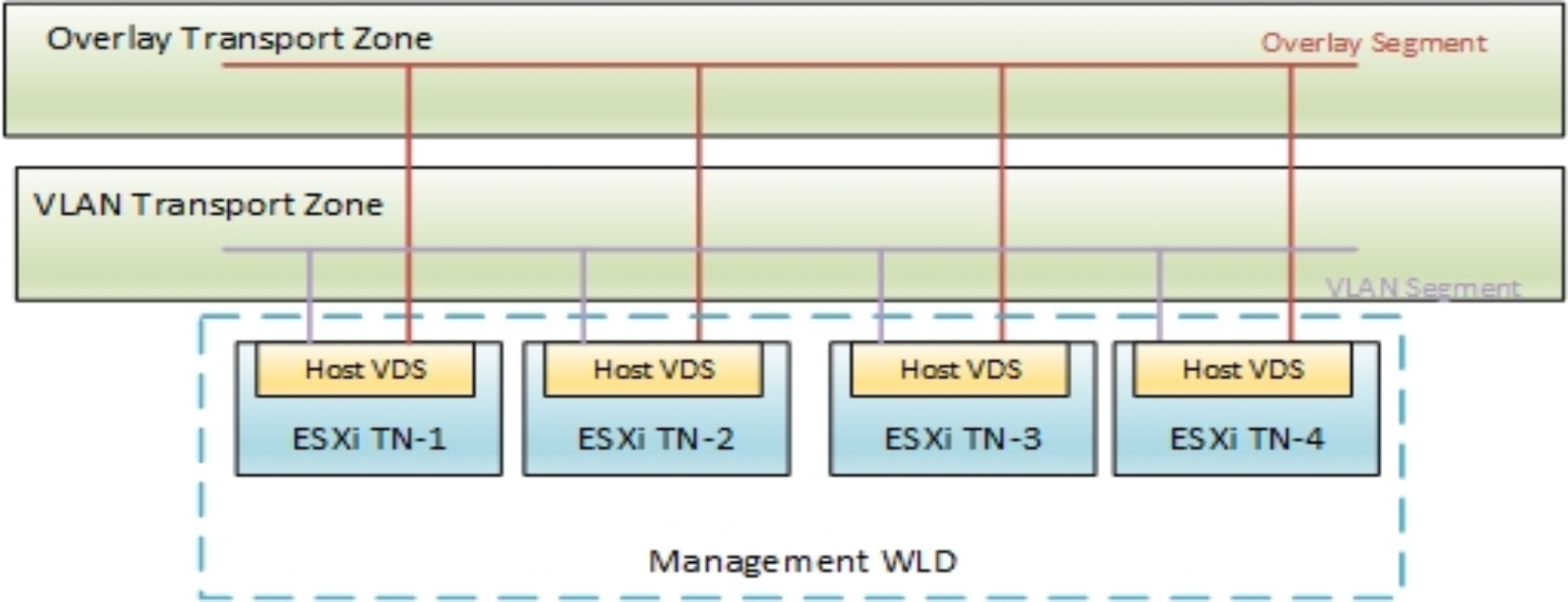Home > Integrated Products > VxRail > Guides > Architecture Guide—VMware Cloud Foundation on VxRail: VCF 4.5 on VxRail 7.0 > NSX-T transport zone design
NSX-T transport zone design
-
A transport zone defines the span of the virtual network because logical switches extend only to N-VDS on the transport nodes that are attached to the transport zone. Each ESXi host has an N-VDS component for the hosts to communicate or participate in a network. They must be joined to the transport zone. There are two types of transport zones:
- Overlay – Used for all Overlay traffic for the host TEP communication
- VLAN – Used for VLAN backed segments, including the Edge VM communications.
- For the Mgmt WLD, only one VxRail cluster exists in standard architecture. All nodes in the VxRail cluster are added to an Overlay network. This network is used for AVN if the feature is enabled. VLAN backed transport zone can be used for any VLAN-backed segments that are created in NSX-T.

Figure 27. Mgmt WLD transport zones
For VI WLD transport zones, when the first VxRail cluster is added to the first VI WLD, SDDC Manager creates the Overlay and VLAN transport zones in the VI WLD. These transport zones are then used for that WLD or even another VI WLD if the same NSX-T instance is used. This configuration is known as 1:many or one NSX-T instance for multiple VI WLD. However, with VCF 4.0 and later, you can create a new NSX-T instance for each VI WLD. This feature is known as 1:1 NSX-T, with one NSX-T instance for each VI WLD.

Figure 28. VI WLD 1: Many NSX-T transport zones
Note: When subsequent VxRail clusters are added to a WLD, or if a new WLD is created, all the nodes participate in the same Overlay Transport Zones. For each VxRail cluster, the same VLAN or a different VLAN can be used for the Host TEP traffic for the Overlay. We recommend using different VLANs.
